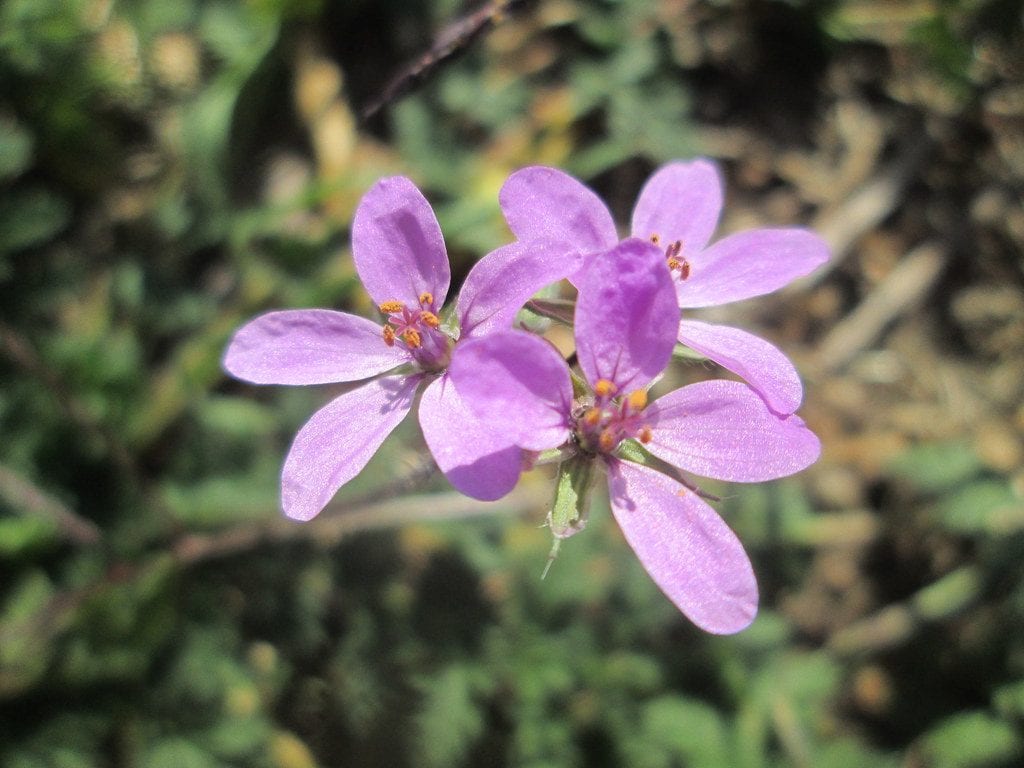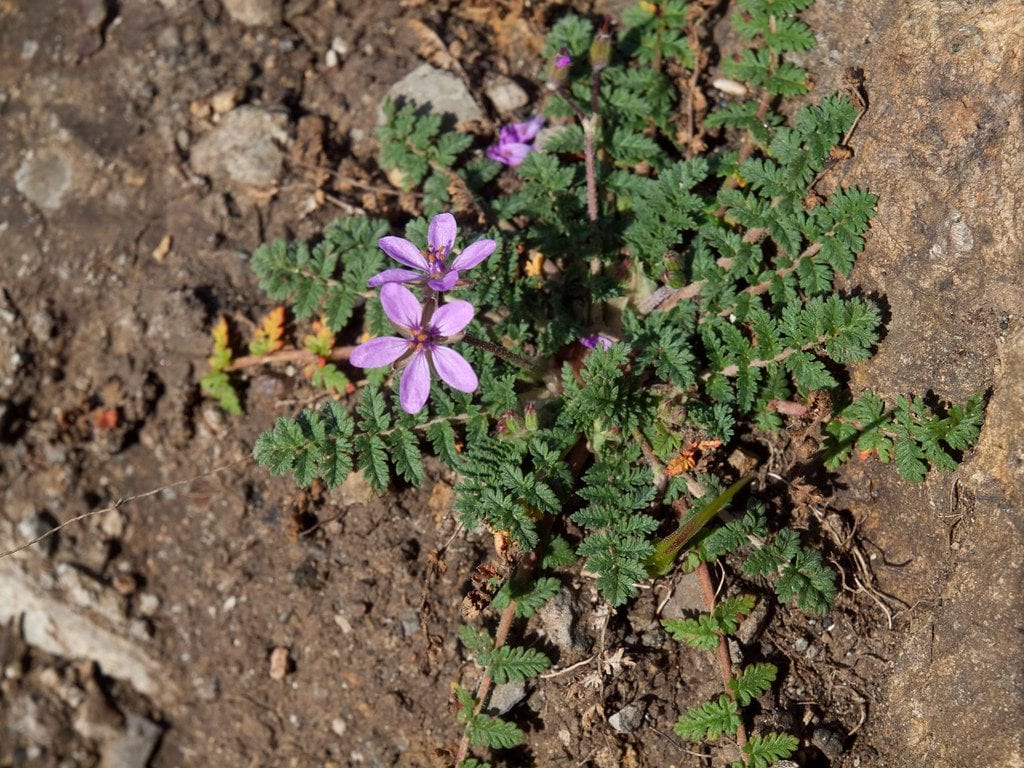
Image - Flickr / Andreas Rockstein
El Hemlock erosionDespite its last name, it is a very, very interesting plant. It is a relative of geraniums, and that is evident in the shape and beauty of its flowers. But it also has medicinal properties, which can be useful at some point in your life.
Although it is not considered a garden plant itself, if you are one of those who wants one designed in a rustic style, with plants that are really strong, you can not miss this species .
Origin and characteristics of Hemlock erosion

Image - Flickr / Katja Schulz
It is a annual herb, that is, it germinates, grows, flowers, produces seeds and then dies in just one year, originating in the temperate regions of Europe. In particular, we will see it on sandy soils by the sea, but also in cultivated areas and in meadows where it often rains frequently. It is popularly called forks, stork's beak, brads or common brad, some names without a doubt very curious 🙂
Grows to a height of between 50 and 60 centimeters, with stems covered by whitish villi. The leaves are composed of pinnate or divided leaflets, green in color. Its flowers, which sprout from spring to autumn, are grouped in umbels in number of up to 12, and are pink, lilac or white. The fruit is dry and measures between 5 and 7mm.
What are its uses and properties?
The so-called forks is a plant that has been used, at least, since the last century as a medicinal; in fact, the Mexican pharmacist and naturalist Alfonso Herrera Fernández pointed out that it was diuretic. Today it is also used for angina and even for the alopecia.
With this in mind, why not give it a try as an ornamental plant? 😉
How is the Hemlock erosion?

Image - Flickr / Franco Folini
If you dare to cultivate it, you are sure to enjoy it a lot. Both its cultivation and its subsequent maintenance are not complicated, since you will only have to acquire seeds once, because when your plants bloom you can extract their seeds and save them for when spring returns and it is time to sow them.
With that said, let's see how it is grown:
Location
It is a plant that has to be outdoors, if possible in a place where the sun shines directly all day.
Earth
- Flower pot: you can use universal substrate (on sale here). For better drainage, mix it with 20-30% perlite or similar.
- Garden: not demanding. Now, if the garden soil has poor drainage, it is advisable to make a planting hole of about 50 x 50cm, and fill it with universal substrate mixed with perlite in equal parts.
Irrigation
Irrigation will be moderate to low, depending on the growing conditions. Thus, the warmer and drier the climate, the more it will be necessary to water; On the other hand, if it rains frequently in your area, you will not have to worry about watering as often.
As it is easier to recover a dry plant than another that has suffered from excess water, it is always better to stay short than to overdo it, so it is important to check the humidity of the soil or substrate before watering.
Of course, when you water, pour water until it comes out through the drainage holes if it is in a pot, or until all the soil is well soaked if it is in the ground.
Subscriber
It is highly advisable to pay using organic products, such as guano or earthworm humus (on sale here), from early spring to autumnIt is especially interesting to do it in spring-summer, which is when it grows and blooms with more health and strength due to warm temperatures.
Multiplication

Image - Flickr / Harry Rose
El Hemlock erosion multiplies by seeds in early spring following this step by step:
- First, fill in a hotbed (seedling tray, flowerpot, milk or yogurt containers ... You can use anything as long as it is waterproof and has some holes in the base) with specific substrate (on sale here).
- Then, water so that the soil is well moistened.
- Then, place the seeds on the surface, so that they are a little apart from each other. If you use seedling trays, put 2 or maximum 3 in each socket; And if you use pots or other containers, you should bear in mind that if they measure about 8,5cm in diameter it is advisable to put between 1 and 3, no more, since it is most likely that they will all germinate and if there are too many together they will compete for the nutrients and space, to the point that only the strongest will survive.
- Finally, cover them with a thin layer of substrate and water again.
Now you will have to place the seedbed outside, in full sun, and keep the substrate moist. After a week the first ones will germinate.
Planting or transplanting time
In spring.
Rusticity
It is an herb that does not resist cold or frost.
What did you think of the Hemlock erosion?